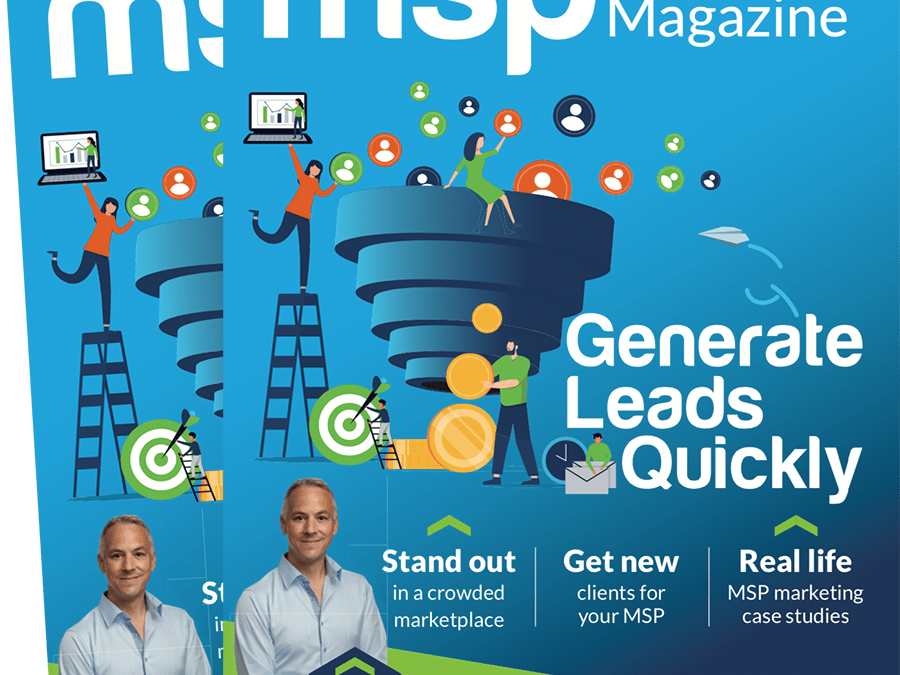In today’s digital age, having a website is essential for businesses of all sizes, including managed service providers (MSPs). Your website serves as the hub for all your online MSP advertising efforts, and it’s often the first point of contact for potential customers.
As an MSP, your website needs to be more than just an online brochure. It needs to showcase your expertise, establish trust and credibility, and provide visitors with a clear path to conversion.
In this article, we’ll provide you with tips and best practices for creating an effective MSP website, including design, navigation and content strategies that will help you stand out in a crowded market and win more business. Whether you’re starting from scratch or revamping an existing site, you’ll learn how to create a website that works for your business and drives results.
Define Your Website Goals and Audience
This is the crucial first step in creating an effective MSP website. Your website should be designed to achieve specific business objectives, whether that’s generating leads, increasing brand awareness, or providing valuable resources to your clients.
By identifying your website goals, you can determine what content and design elements will be most effective in achieving those goals. Additionally, understanding your target audience is essential in creating a website that resonates with your potential clients.
You’ll want to consider factors such as their pain points, challenges and preferences to create a website that meets their needs and motivates them to take action. By taking the time to define your goals and audience, you can create a website that drives results for your MSP business.
Design for User Experience and Visual Appeal
Designing for user experience is critical for creating an effective MSP website that engages visitors and drives conversions. Your website should be easy to navigate, visually appealing and provide a seamless user experience.
This means that your website design should be clean, modern and easy to use, with a clear hierarchy of information that guides visitors to important content and calls to action. Additionally, your website’s visual elements, such as images, graphics and videos, should be used strategically to support your messaging and enhance the user experience.
By prioritising user experience and visual appeal in your website design, you can create a website that not only looks great but also engages visitors, thereby improving your MSP business.
Optimise Your Navigation for Easy Site Use and Conversion
Optimising your website navigation is critical for providing visitors with a positive user experience and driving conversions for your MSP business. Your website should have a clear and intuitive navigation structure that allows visitors to quickly and easily find the information they’re looking for.
This means using clear labels and logical groupings of content, as well as including navigation elements such as dropdown menus and breadcrumb trails. Additionally, your website navigation should be optimised for conversion, with clear calls to action throughout the site that encourage visitors to take action.
By prioritising easy navigation and conversion optimisation, you can create a website that not only provides value to visitors but also drives business results for your MSP.
Craft Engaging and Compelling Content for Your MSP Website
Crafting engaging and compelling content for your MSP website is essential for attracting and retaining visitors, establishing trust and credibility, and driving conversions.
Your website content should be informative, helpful and relevant to your target audience, with a clear focus on addressing their pain points and providing solutions to their problems. Additionally, your content should be presented in an engaging and easy-to-read format, with a mix of text, images and videos that appeal to different learning styles.
By crafting content that resonates with your audience and provides real value, you can build trust and establish your MSP as a thought leader in your industry, ultimately enhancing your marketing efforts and growing your customer base.
Leverage SEO Strategies to Boost Your Website’s Visibility
Leveraging SEO strategies is essential for boosting your MSP website’s visibility and attracting organic traffic from search engines. Your website should be optimised for relevant keywords and phrases, with high-quality content that’s structured and formatted for easy indexing by search engine crawlers.
Additionally, you should use meta tags and descriptions to provide additional context for search engines and optimise your website’s URLs for maximum impact. Off-site SEO strategies, such as link building and social media promotion, can also help boost your website’s authority and visibility.
By prioritising SEO in your website strategy, you can increase your visibility in search results and attract more qualified leads to your MSP business.
To Sum It Up
Creating an effective MSP website requires careful attention to detail, which includes design, navigation and content. By implementing these tips and tricks, you can create a website that not only looks great but also drives results for your MSP business.
Remember, your website is often the first point of contact for potential customers, so it’s essential to create a website that reflects your brand and provides value to your audience.
By following these tips and continuously refining your website strategy, you can build a strong online presence and establish your MSP as a leader in your industry.






